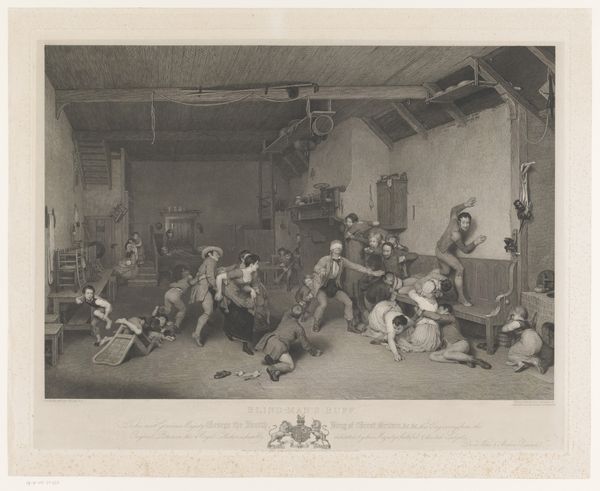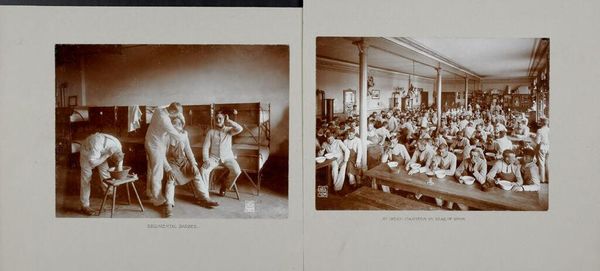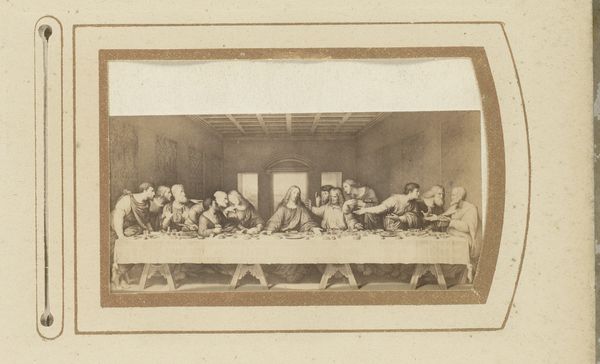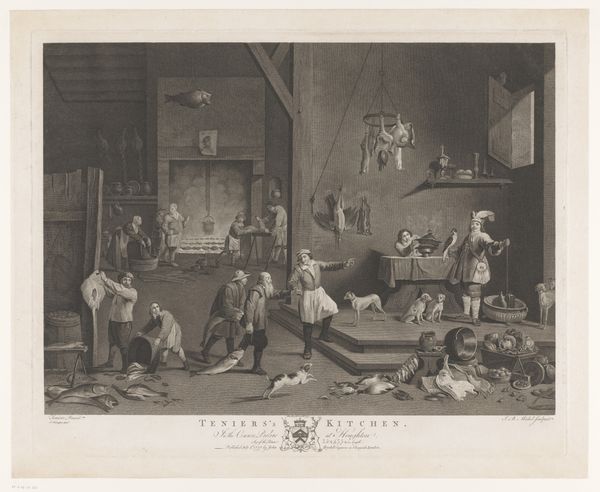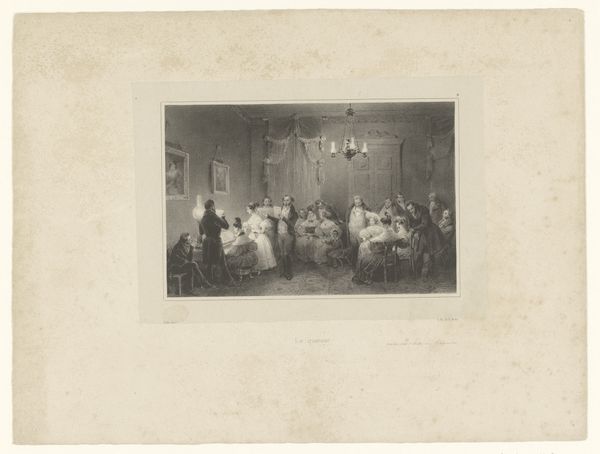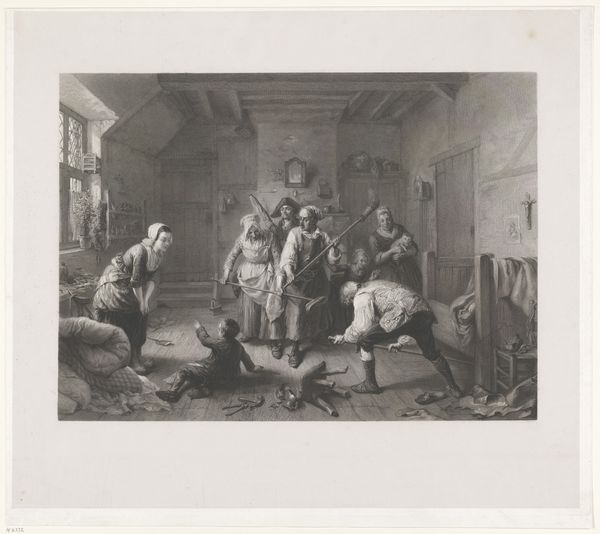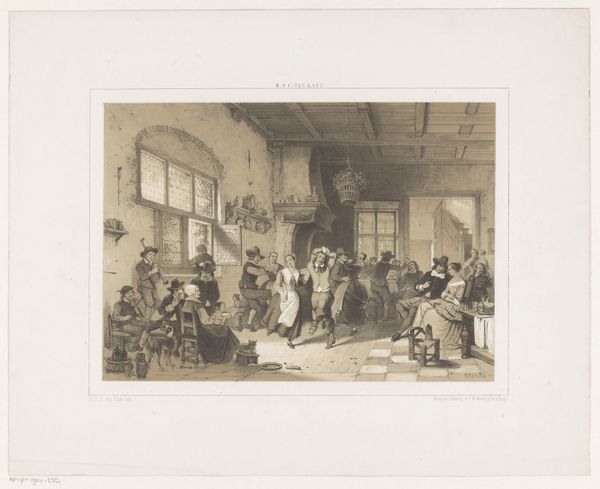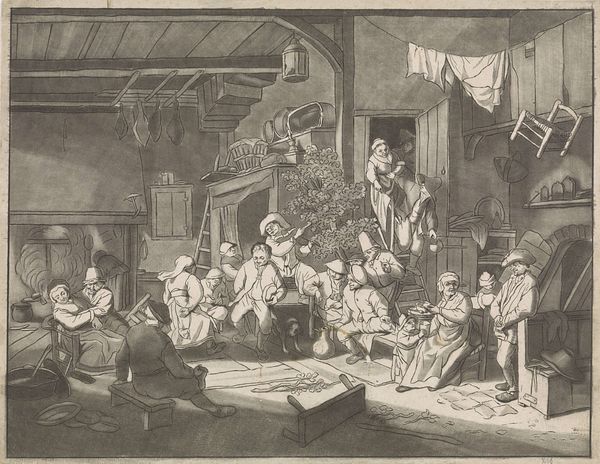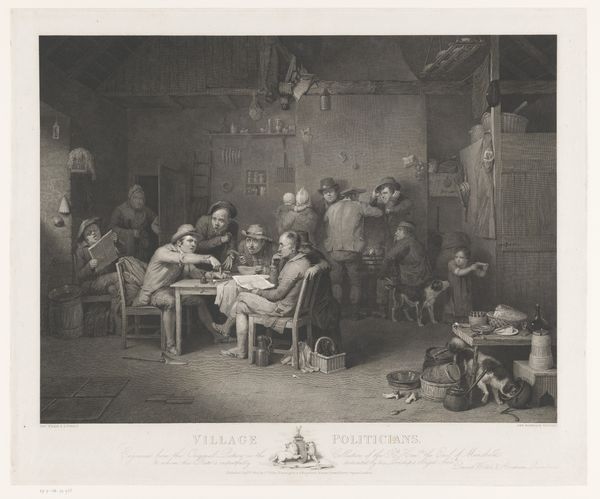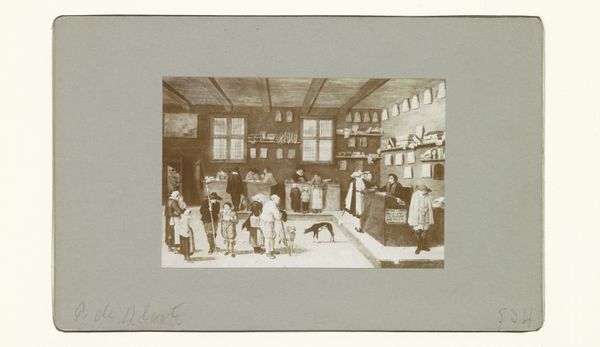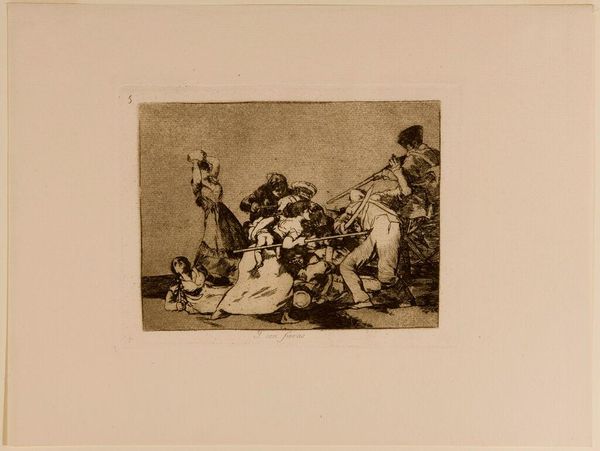
Copyright: CC0 1.0
Curator: This is "Blind-man's Bluff," by Abraham Raimbach. Immediately, I notice the light—it seems to highlight the frantic energy of the game. Editor: The game itself is such a powerful symbol of human interaction. The blindness represents ignorance, vulnerability, yet also trust and playfulness. The pursuit is pure, chaotic energy. Curator: I'm drawn to the details of the room—the exposed beams, the simple furnishings. You can practically feel the rough texture of the materials used to construct this space. Think about the labor that went into such construction. Editor: Consider that image of domesticity, the children playing, and that one, seemingly oblivious woman in the background. The game itself becomes a microcosm of societal roles and expectations. Curator: Looking at the etching itself, it's an impressive feat of printmaking. The lines create depth and movement, and it really feels like the work captures the immediacy of the moment. Editor: Absolutely. It's a compelling scene, rich with potential meanings, and a classic example of visual storytelling. Curator: I find myself thinking about the role of play in shaping these children's understanding of the world. Editor: Agreed. It offers a glimpse into the past, reflecting timeless aspects of human nature.
Comments
No comments
Be the first to comment and join the conversation on the ultimate creative platform.
